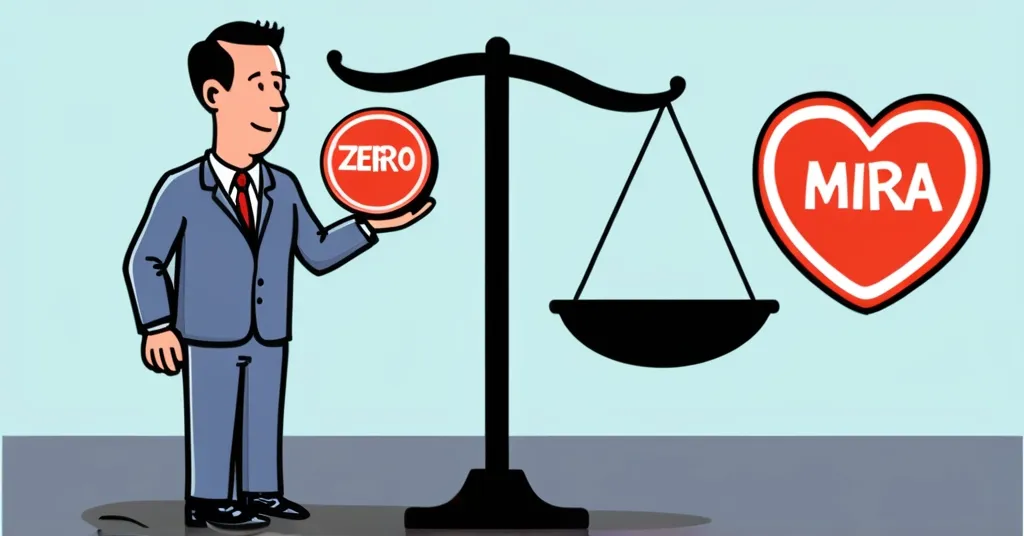Siqi Chen Apologizes for ZERO Token Losses, Pledges Repayment

MIRA Dad Siqi Chen Apologizes and Vows to Repay Losses from Rugged Test Token ZERO
Imagine investing in a token that its creator explicitly warned would go to zero. That’s exactly what happened with the ZERO token on Solana.
- ZERO Token launched on Solana as an experiment.
- Despite warnings, saw 178% increase and $32M trading volume.
- Chen sold 40% of supply, later repurchased and burned tokens.
- Pledges personal funds to compensate affected investors.
- MIRA token funds brain tumor research for daughter Mira.
Siqi Chen, known for his dedication to funding research for his daughter Mira’s brain tumor through the MIRA token, took an unexpected route with ZERO. Launched on December 30th as a test token to see if people would invest in a token clearly labeled as having no value, ZERO defied expectations. Despite Chen’s clear warnings on the launch platform pump.fun, the token saw a whale splashing in with a purchase of $208,900 worth of tokens, and amassed a trading volume of $32 million and a market cap of over $710,000.
“My heart sank when I saw investors jumping into ZERO despite my warnings. I knew I had to make it right,” Chen confessed. In a moment of panic, he sold 40% of ZERO’s supply, pocketing about 444 SOL. Yet, true to his commitment to ethical practices, he later repurchased and burned the tokens. “I didn’t expect everyone to just be able to see it and buy it – I thought it’s something I would have needed to tweet about. Then I panic sold 40% of supply and made about 444 SOL,” Chen explained.
However, the story doesn’t end there. Chen has vowed to make things right by repaying all affected investors from his personal funds. “I will do this out of my personal funds, not the $MIRA wallet. I don’t know how exactly yet, but will try to figure out details soon with the help of the community. I will airdrop losses directly to affected wallets,” he pledged. This move underscores a stark contrast between the speculative frenzy often seen in the crypto market and Chen’s commitment to ethical conduct.
The MIRA Token’s Mission
The MIRA token, which was created to fund research at the Hankinson Lab for Mira’s rare brain tumor, showcases a legitimate use case for cryptocurrencies. “I just want to say that whoever said crypto has no legitimate use cases, you can tell them that funding for rare disease research is a pretty legitimate use case,” Chen emphasized. At the time of this writing, MIRA had experienced a nearly 20% drop in the past 24 hours, trading at $0.015 with a market cap of $15 million.
Mira’s condition is a rare form of brain tumor that has limited treatment options. The MIRA token aims to fund research to improve outcomes for children like Mira, highlighting the potential for cryptocurrencies to drive social good. Despite its recent price drop, MIRA raised over $1 million for rare disease research, demonstrating the power of community engagement within the crypto space.
The Broader Implications for Crypto
The ZERO incident serves as a poignant reminder of the unpredictable nature of the crypto market, where meme coins and test tokens can capture the imagination and wallets of investors in ways that defy logic. Yet, it also highlights the potential for cryptocurrencies to be used for social good, as exemplified by the MIRA token’s mission.
“This incident underscores the need for better investor education and understanding of the risks involved in speculative investing,” said crypto analyst Jane Doe. “While Chen’s actions are commendable, they also highlight the wild west nature of the crypto space.”
Chen’s limited prior engagement with crypto, as clarified in his public statements, counters any conspiracy theories about his orchestration of the MIRA token launch. His strategic approach to token liquidation, planning to sell MIRA tokens incrementally, reflects a commitment to responsible token management and market stability.
As the crypto community continues to navigate this volatile landscape, Chen’s actions with ZERO and MIRA offer both a cautionary tale and a beacon of hope. His transparency and willingness to right wrongs from his own pocket stand in stark contrast to the often murky waters of crypto, where scams and rug pulls are all too common. It’s a reminder that even in the wild west of crypto, integrity and a commitment to doing the right thing can still shine through.
Key Takeaways and Questions
- What is the ZERO token and why was it created?
The ZERO token was launched as an experiment to test if people would invest in a token clearly labeled as having no value. - How did the ZERO token perform despite its warnings?
Despite the warnings, the ZERO token saw a 178% increase since its launch and amassed a trading volume of $32 million and a market cap of over $710,000. - What actions did Siqi Chen take regarding the ZERO token?
Chen initially sold 40% of the ZERO supply, panic-selling 444 SOL. He later bought back the tokens and burned them, and pledged to repay losses from his personal funds. - What is the significance of the MIRA token?
The MIRA token was created to fund research for Siqi Chen’s daughter Mira’s rare brain tumor, showcasing a legitimate use case for cryptocurrencies in funding medical research. - How did the MIRA token perform at the time of this writing?
At the time of this writing, the MIRA token had fallen by nearly 20% in the past 24 hours, trading at $0.015 with a market cap of $15 million. - What are the broader implications of the ZERO incident for the crypto community?
The incident highlights the need for better investor education and understanding of the risks involved in speculative investing, while also showcasing the potential for cryptocurrencies to drive social good.



